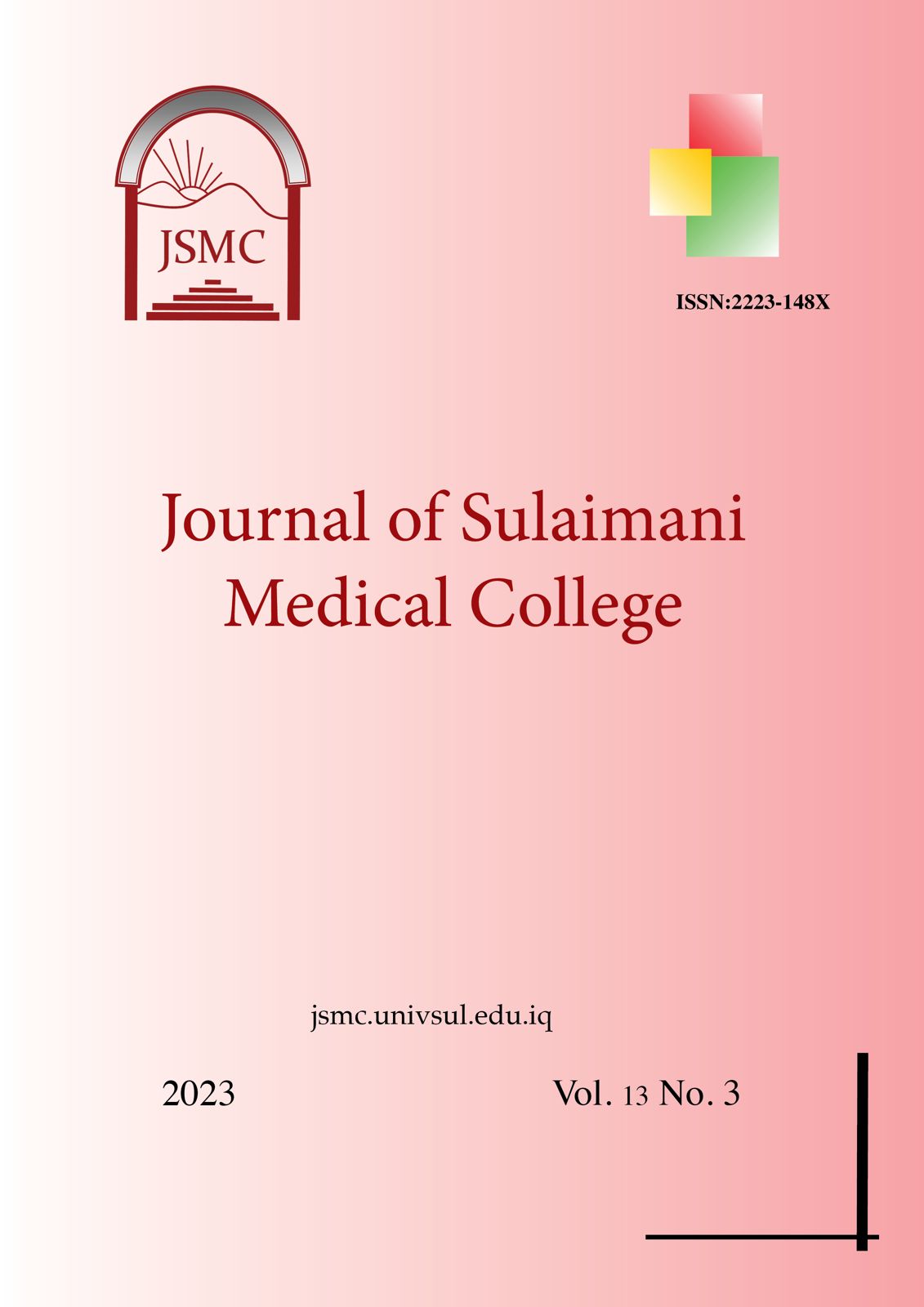VALIDATION OF THE KURDISH LANGUAGE VERSION OF THE STANDARDIZED COSMESIS AND NASAL OUTCOMES SURVEY (SCHNOS), APPLICATION FOR SEPTORHINOPLASTY HEALTH
DOI:
https://doi.org/10.17656/jsmc.10419Keywords:
Septorhinoplasty, patient-reported outcome measure, Standardized Cosmesis, Health Nasal Outcomes Survey Level of Evidence: Level IIIAbstract
Background
The Standardized Cosmesis and Health Nasal Outcomes Survey (SCHNOS) questionnaire is a recent tool for evaluating patient satisfaction in both functional and cosmetic components of rhinoplasty. It is a reliable, steady, and corroborated patient-reported outcome measure that is not available in Kurdish.
Objectives
To evaluate the application of the Kurdish version of the Standardized Cosmesis and Health Nasal Outcomes Survey (SCHNOS) scale for Septorhinoplasty surgery and research.
Materials and Methods
conducted four centre studies to validate The Kurdish version of the scale We adhered to a strict translation procedure, including a forward and back translation and reconciliation interviews, to ensure the original content and concepts were preserved compared for patients and control groups and tailored to the demographic the instrument was intended for.
Results
showed that the Kurdish version of the SCHNOS was conceptually comparable to the original English version and demonstrated high internal consistency for nasal function as an aesthetic postoperative outcome. The Spearman rank correlation analysis indicated a weak to moderate correlation between the different items, indicating that the different items measure somewhat distinct aspects of nasal function and appearance. However, the high Cronbach’s alpha values suggested that the different items measure similar aspects of nasal function and appearance and can be considered a reliable scale for assessing SCHNOSE.
The results of the paired samples t-test showed significant differences between the preoperative and postoperative obstructive and aesthetic SCHNOSE scores, indicating that the observed differences are likely to be real and not simply due to random variation in the data.
Conclusion
The Kurdish form of the SCHNOS demonstrates virtuous reliability and validity, coherent with the original version. Thus, it can be used as a validated questionnaire for outcome measurements for rhinoplasty. This version should be recommended to evaluate both functional and cosmetic outcomes in daily practice and rhinoplasty-related examinations.
References
Moubayed SP, Ioannidis JP, Saltychev M, Most SP. The 10-item Standardized Cosmesis and Health Nasal Outcomes Survey (SCHNOS) for functional and cosmetic rhinoplasty. JAMA facial plastic surgery. 2018 Jan 1;20(1):37-42.
Qaradaxi KA, Mohammed AA, Mohammed HN. The outcome of V vs. S-shaped nasal deformity in preservation rhinoplasty; A comparative study. InAnnales de Chirurgie Plastique Esthétique 2022 Jun 4. Elsevier Masson. DOI: https://doi.org/10.1016/j.anplas.2022.05.004
Kamali AS, Rostam HH, Khdir AA, Mina OA. Exploration of Cosmetic Factors Contributing to Rhinoplasty among Both Genders in Iraqi Kurdistan. Kurdistan Journal of Applied Research. 2020 Dec 12:10-8. DOI: https://doi.org/10.24017/science.2020.ICHMS2020.2
Qaradaxi KA, Mohammed AA. Functional and aesthetic outcomes of no dissection nasal dorsum using sub dorsal Septal Excision in preservation rhinoplasty. Plastic and Reconstructive Surgery. 2023 Feb 27:e010335. DOI: https://doi.org/10.1097/PRS.0000000000010335
Toriumi DM, Kovacevic M, Kosins AM. Structural Preservation Rhinoplasty: A Hybrid Approach. Plastic and Reconstructive Surgery. 2022 Mar 2;149(5):1105-20. DOI: https://doi.org/10.1097/PRS.0000000000009063
Most SP, Moubayed SP. Patient-reported outcome measures for facial plastic surgery: a specialty finally gets to go to the PROM. JAMA Facial Plastic Surgery. 2017 Mar;19(2):101-. DOI: https://doi.org/10.1001/jamafacial.2016.1429
Lee MK, Most SP. A comprehensive quality-of-life instrument for aesthetic and functional rhinoplasty: the RHINO scale. Plastic and Reconstructive Surgery Global Open. 2016 Feb;4(2). DOI: https://doi.org/10.1097/GOX.0000000000000592
Barone M, Cogliandro A, Di Stefano N, Tambone V, Persichetti P. A systematic review of patient-reported outcome measures after rhinoplasty. European Archives of Oto-Rhino-Laryngology. 2017 Apr;274(4):1807-11. DOI: https://doi.org/10.1007/s00405-016-4359-9
Naraghi M, Atari M. Development and validation of the expectations of Aesthetic Rhinoplasty Scale. Arch Plast Surg. 2016;43(4):365- 37 DOI: https://doi.org/10.5999/aps.2016.43.4.365
Kandathil CK, Saltychev M, Patel PN, Most SP. Natural history of the standardized cosmesis and health nasal outcomes survey after rhinoplasty. The Laryngoscope. 2021 Jan;131(1): E116-23. DOI: https://doi.org/10.1002/lary.28831
Abdelwahab M, Saltychev M, Elkholy NA, Elsisi H, Moubayed SP, Most SP. Arabic validation of the standardized cosmesis and health nasal outcome survey for Arabic-speaking rhinoplasty patients. Plastic and Reconstructive Surgery. 2019 Mar 1;143(3):673e-5e DOI: https://doi.org/10.1097/PRS.0000000000005357
Jongerden, J. “Governing Kurdistan: Self-Administration in the Kurdistan Regional Government in Iraq.” Ethnopolitics 18, no. 1 (2018): 61–75. DOI: https://doi.org/10.1080/17449057.2018.1525166
Guillemin F, Bombardier C, Beaton D. Cross-cultural adaptation of health-related quality of life measures: literature review and proposed guidelines. Journal of Clinical Epidemiology. 1993 Dec 1;46(12):1417-32. DOI: https://doi.org/10.1016/0895-4356(93)90142-N
Wild D, Grove A, Martin M, Eremenco S, McElroy S, Verjee-Lorenz A, Erikson P. Principles of good practice for the translation and cultural adaptation process for patient-reported outcomes (PRO) measures: report of the ISPOR task force for translation and cultural adaptation. Value in health. 2005 Mar 1;8(2):94-104. DOI: https://doi.org/10.1111/j.1524-4733.2005.04054.x
Moubayed SP, Ioannidis JPA, Saltychev M, The 10-item Standardized Cosmesis and Health Nasal Outcomes Survey (SCHNOS) for functional and cosmetic rhinoplasty. JAMA Facial Plast Surg. 2018; 20:37–42. DOI: https://doi.org/10.1001/jamafacial.2017.1083
Sullivan G. A primer on the validity of assessment instruments. J Grad Med Educ. 2011; 3:119–120. DOI: https://doi.org/10.4300/JGME-D-11-00075.1
Marro M, Mondina M, Stoll D,. French validation of the NOSE and RhinoQOL questionnaires in the management of nasal obstruction. Otolaryngol Head Neck Surg. 2011; 144:988–993. DOI: https://doi.org/10.1177/0194599811400686
Vincent C, Gagné JP, Leroux T, et al. French-Canadian translation and validation of four questionnaires assessing hearing impairment and handicap. Int J Audiol. 2017; 56:248–259. DOI: https://doi.org/10.1080/14992027.2016.1263398
Ishii LE, Tollefson TT, Basura GJ, et al. Clinical practice guideline: improving nasal form and function after rhinoplasty. Otolaryngol Head Neck Surg. 2017;156(2 suppl):S1–S30 DOI: https://doi.org/10.1177/0194599816683153
Downloads
Published
Issue
Section
License
Copyright (c) 2023 Kurdo A. Qaradaxi, Haidar N. Mohammed, Hawree Abdul Sattar Hasan, Zana Hussein Aziz, Hiwa Mohammed Khan, Kazim Abdulla Kakways, Kawa M. Marof

This work is licensed under a Creative Commons Attribution-NonCommercial-ShareAlike 4.0 International License.





 This work is licensed under
This work is licensed under 